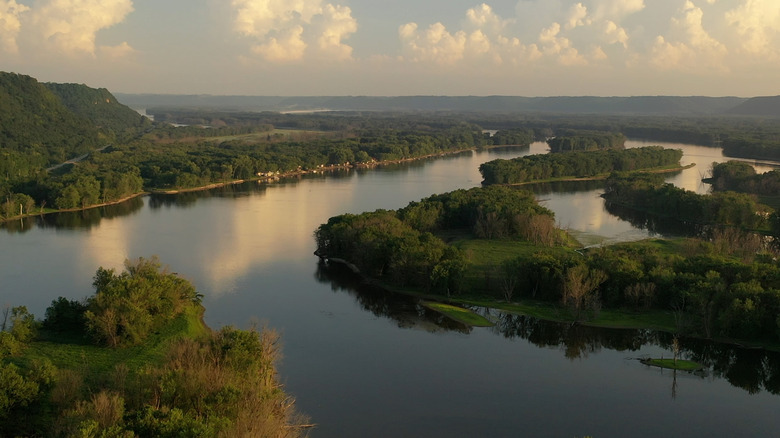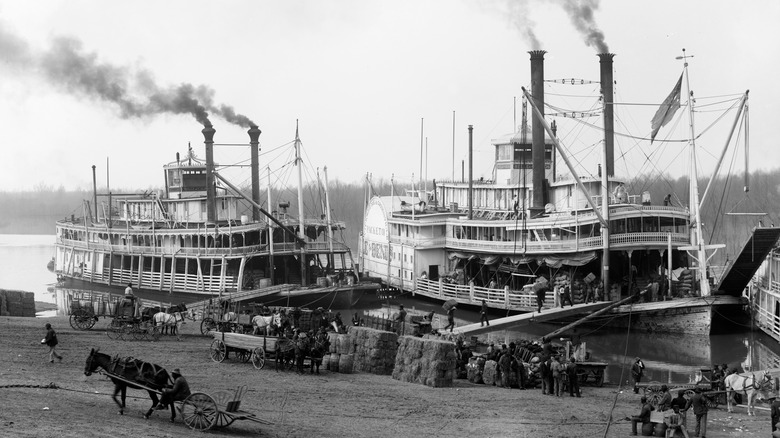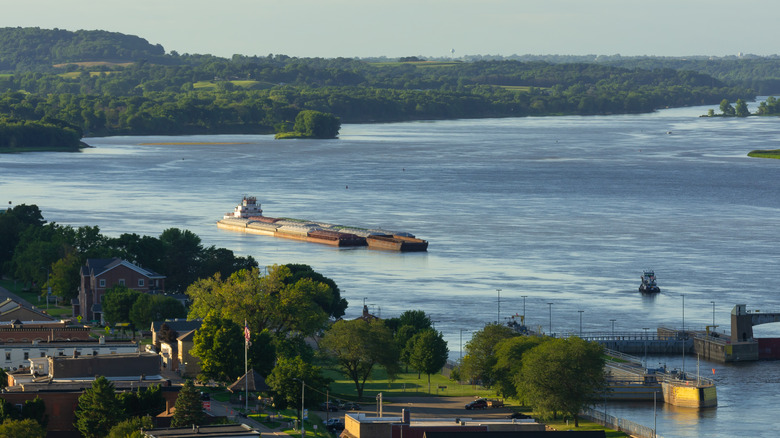Here's How Long It Takes A Drop Of Water To Travel The Length Of The Mississippi River
The United States' second-longest river, the Mississippi, stretches roughly 2,300 miles, from Lake Itasca in Minnesota to the Gulf of Mexico, according to the National Park Service (NPS). Looming large in the American consciousness, Native Americans lived alongside and relied on the Mississippi River for millennia. As the United States grew throughout the 19th and 20th centuries, the Mississippi became an important commercial and transportation waterway, forming the backbone on which America was built and flourished, as American Rivers explains.
In the 19th century, the Mississippi also inspired one America's greatest writers, Mark Twain, who worked for a time as a Mississippi riverboat captain in his youth, and who set one of his most well-known works, "The Adventures of Huckleberry Finn," along the river's route (via Britannica). In 2013, Indian Country Today reported a group of women walked the length of the Mississippi to draw attention to water quality issues the river and elsewhere. That trip was estimated to take about two months. Is that also how long it takes, then, for a drop of water to travel the same distance?
Water speed in the Mississippi varies based on location
To judge how long it might take for a single drop of water to travel from the source of the Mississippi River in Minnesota to the river's end in the Gulf of Mexico, the first thing to understand is the water speed varies at different points in the river. Where the river forms in Minnesota, the water travels at around 1.2 mph, according to the NPS. Compare that to the average walking speed of a human, at 2.5 mph to 4 mph, based on data from Nike.
As can be seen, water at the source of the Mississippi travels roughly half the speed a human could walk that same distance. As the river travels south, though, the speed of the water increases to around 3 mph, much closer to the average speed of human walking. It's also important to note that water speeds fluctuate wildly at different points along the waterway, depending on possible obstructions and the width and depth of the river, among other factors, as the NPS goes on to explain.
Water travels the length of the Mississippi in about 90 days
If it were possible for a single drop of water to choose to sprout legs and walk the length of the Mississippi it would arrive at its destination much sooner than it would if it chose to float, all other things being equal. According to the NPS, a drop of water beginning at Lake Itasca to travel to the Gulf of Mexico takes around 90 days — about three months. In the history of the Mississippi, industrial levees and dikes have transformed the route of the river, choking off floodplains and affecting habitat, according to American Rivers.
For these reasons and more, many restoration projects along the Mississippi are currently underway. That said, the waters of the Mississippi — whether they begin from the source or fall as precipitation or flow in from a tributary — still reach their destination. That's more than can be said of other major waterways in the U.S. and elsewhere, such as the Rio Grande and Colorado rivers, and Indus River in Central Asia, which are diverted so extensively that most of their waters no longer reach the sea (via The National News).


